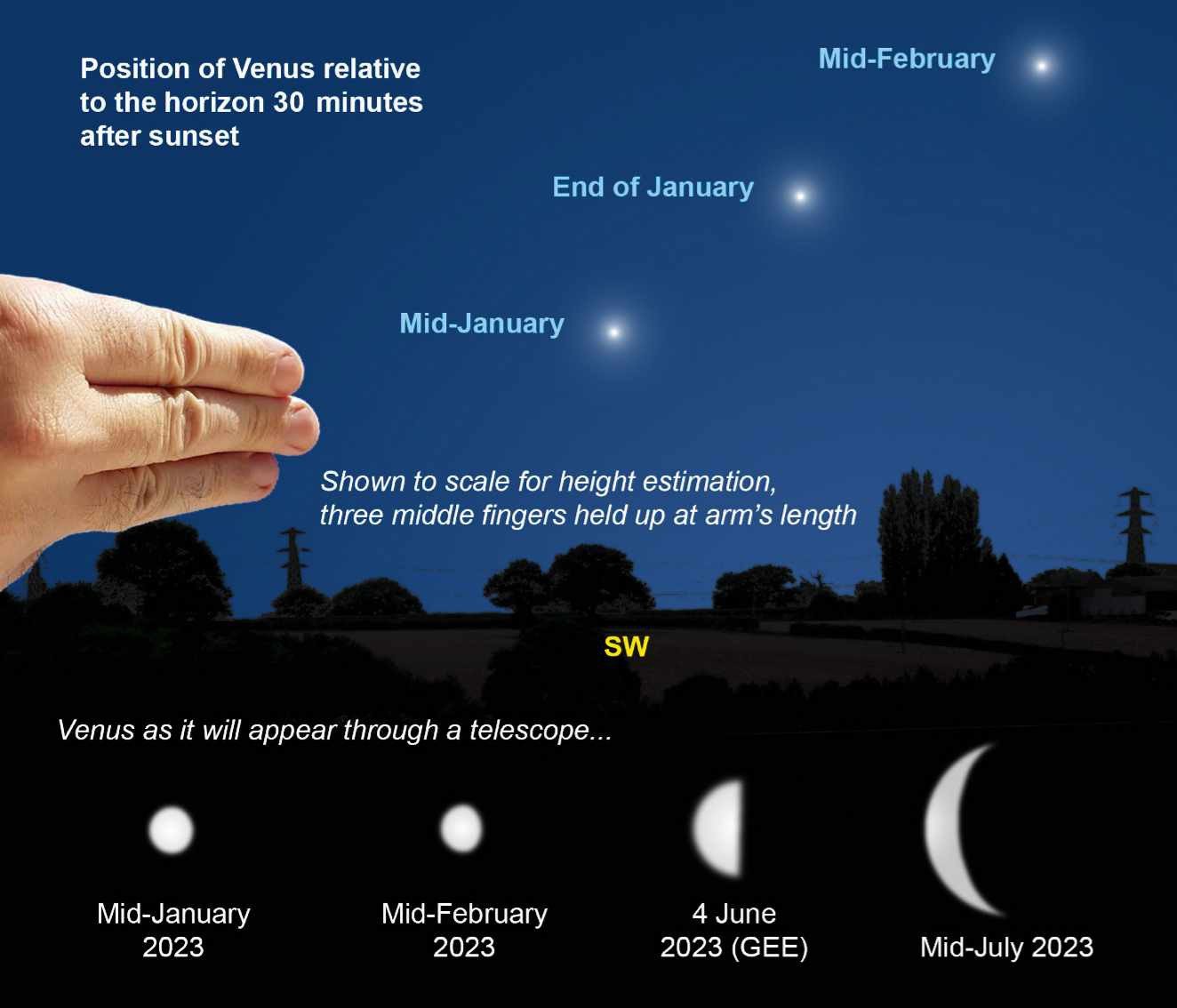ASTRONOMY FOR BEGINNERS

VENUS: THE EVENING STAR
WHEN: FROM JANUARY TO JULY
Look west-southwest during mid-January, about 30 minutes after sunset, and you should see Venus, which sets 110 minutes after the Sun. By the end of the month, it’ll set 135 minutes later, making the planet even easier to see.
Venus is the brightest planet visible from Earth, due to its proximity to the Sun and reflective, cloud-covered globe. Venus’s orbit is around 70 per cent the size of Earth’s, but follows an elliptical path around the Sun. When lined up with the Sun on the far side of this ellipse, Venus is at superior conjunction. After this, it slowly re-emerges into the evening twilight sky, becoming visible after sunset. Some re-emergences are better than others and 2023’s should be good.
Through a telescope, as Venus emerges from the Sun’s glare, it displays as a gibbous phase between half and fully lit. The phase reduces until Venus appears furthest from the Sun in the evening sky, a position known as greatest eastern elongation (GEE). The next GEE occurs on 4 June, when, through a telescope, Venus should appear at dichotomy or 50 per cent lit. However, the thick Venusian atmosphere interferes and brings the appearance of dichotomy through a telescope forward a few days.
After GEE, Venus appears to head back towards the Sun, moving along part of its orbit closest to Earth. As a result, the phase changes quickly and, through a telescope, Venus appears as a rapidly diminishing crescent.
Eventually, it gets too close to the Sun to see safely, before finally lining up with the Sun on the Earth-side of its orbit. Known as inferior conjunction, this next occurs on 13 Aug 2023. From there, the ‘evening star’ will re-emerge into the morning sky, becoming the ‘morning star’ once more, even though it is, of course, a planet! PL